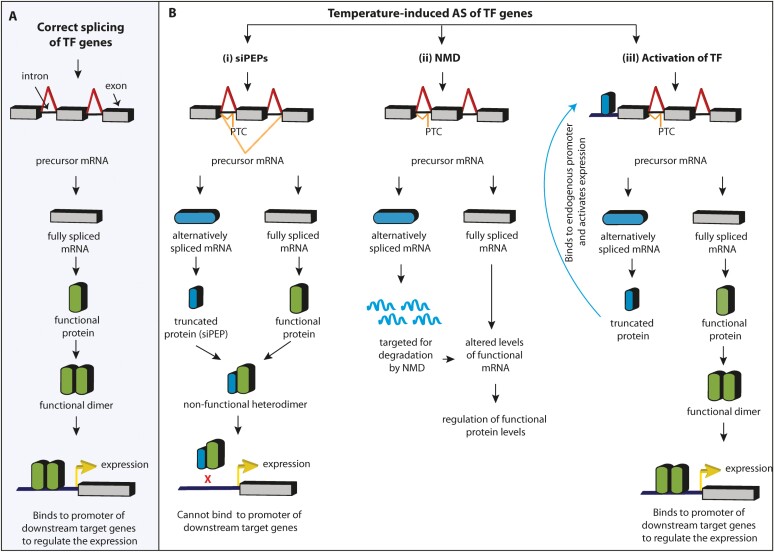Fig. 2.
Role of temperature-induced alternative splicing (AS) and mode of action of different splice variants. (A) Regulation of down-stream target genes when the transcription factor (TF) transcript undergoes constitutive splicing to form a functional protein. A functional homodimer of the TF is formed that binds to the promoters of target genes to activate or repress their expression. (B) Temperature-induced AS can lead to three types of TF regulation. (i) Peptide interference by the formation of small interfering peptides (siPEPs). The alternatively spliced mRNA leads to a truncated protein that functions as an siPEP by forming a non-functional heterodimer with the functional protein; this inhibits the TF from binding to the promoters of target genes to affect their expression. (ii) Nonsense-mediated decay (NMD) of alternatively spliced transcripts. Many splice variants that contain premature termination codons (PTCs) are targeted for degradation by NMD, thereby altering the transcript levels available for translation to form the functional TF protein. (iii) Activation of the TF. AS leads to the formation of a truncated protein that has the ability to bind to the promoter of its own gene and modify its expression. Red lines represent constitutive splicing and orange lines represent temperature-induced AS.

